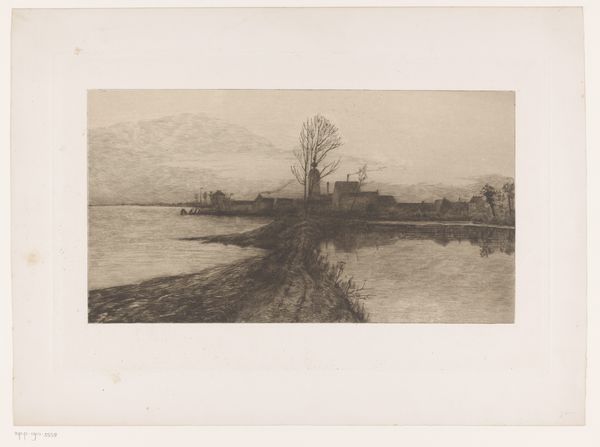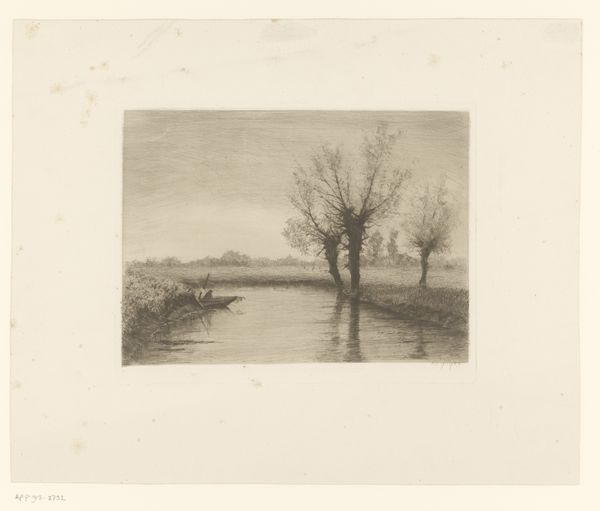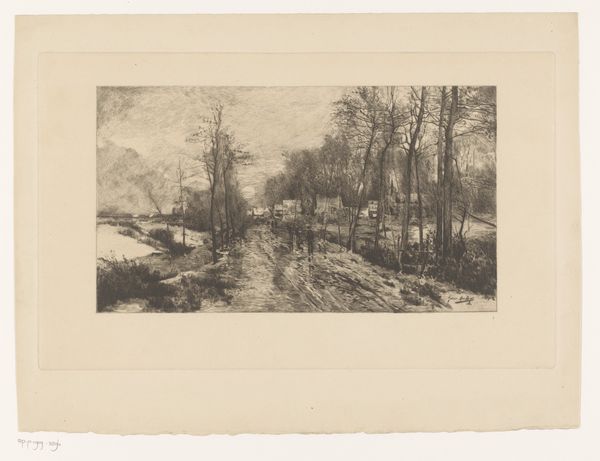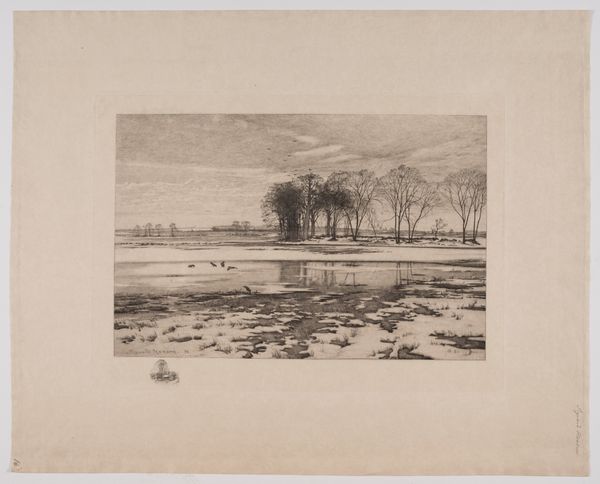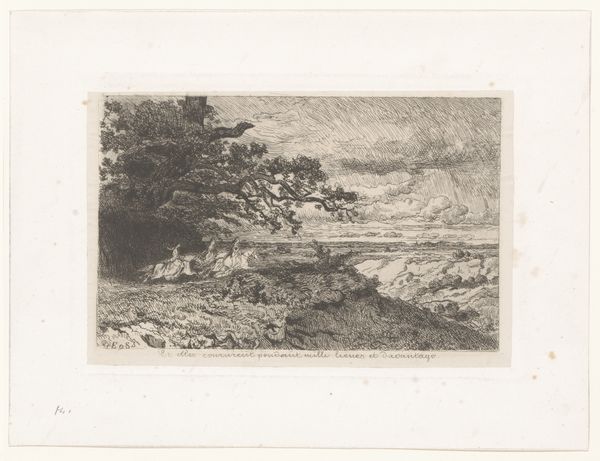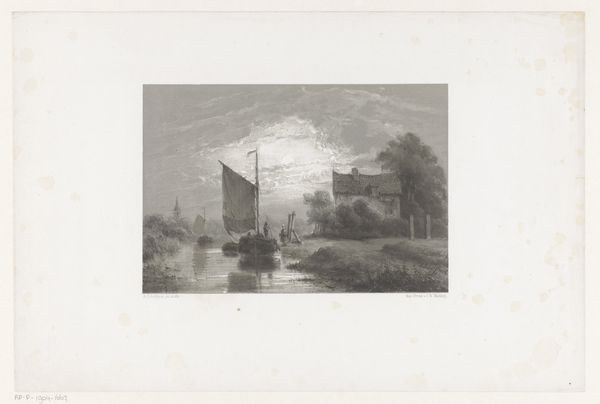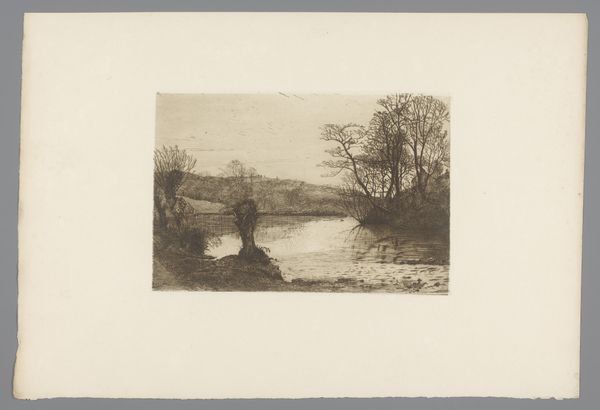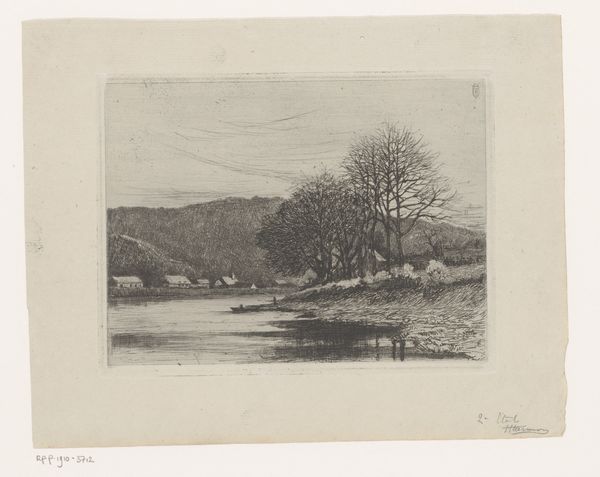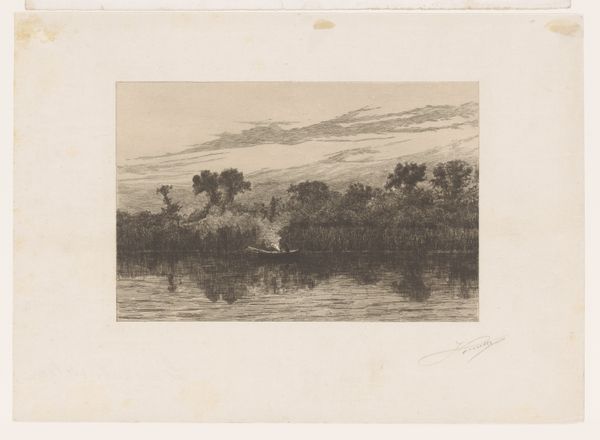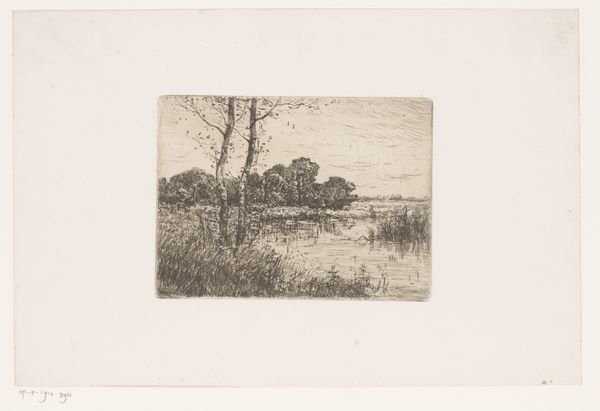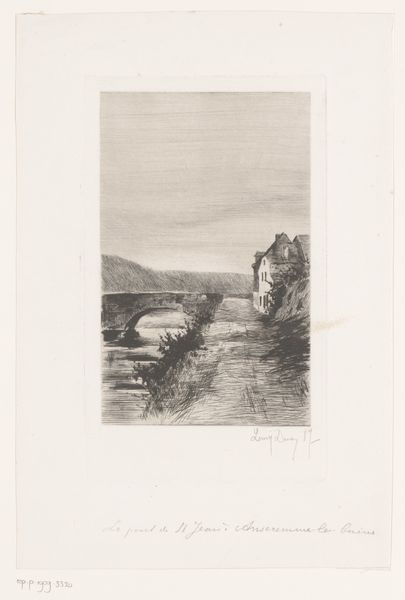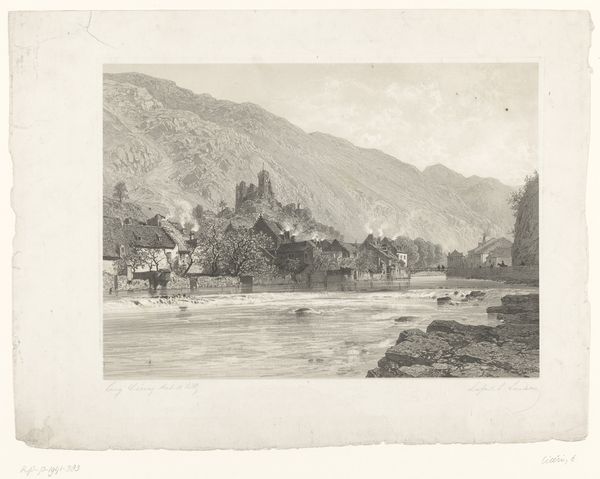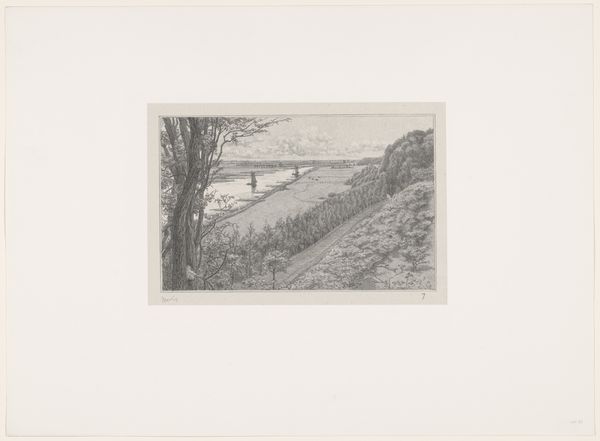
Gezicht op bebouwing aan het eind van een smal verhoogd pad tussen twee meren 1862 - 1901
0:00
0:00
drawing, print, etching, pencil
#
drawing
#
lake
# print
#
etching
#
pencil sketch
#
landscape
#
pencil
#
cityscape
Dimensions: height 296 mm, width 458 mm
Copyright: Rijks Museum: Open Domain
Curator: Immediately, the textures catch my eye; such delicate work with light and shadow. Editor: Agreed. It is a serene, almost melancholic scene. The tonal range, especially in the water reflections, evokes a profound quiet. We're looking at "View of buildings at the end of a narrow elevated path between two lakes", attributed to Jules Guiette, dating from between 1862 and 1901. It’s an etching and pencil drawing, primarily. Curator: The etcher’s craft is beautifully displayed. I’m fascinated by the repetitive labor involved in creating those fine lines, each one requiring a deliberate action and adding up to reveal a scene likely depicting the industrialized outskirts, offering insights into how land usage changed during urbanization. Notice the details in the buildings in the background; humble houses. Editor: Absolutely. The linear perspective is key to its tranquil composition, drawing our eye along that elevated path toward the clustered buildings, subtly playing with geometry. What I find intriguing is the relationship between that central tree, bare of leaves, and its stark reflection in the water – almost mirroring the scene and suggesting some philosophical ideas. Curator: What a remarkable reflection indeed! One can ponder at the division of natural resources on each side. But on another angle, who maintained the pathways in a time like this? And what were they transporting between the land on each side? This composition highlights the labour it took to maintain and distribute such material for urbanization. Editor: An excellent consideration about distribution of materials. But there's also that atmospheric quality which Guiette achieved. It softens any potential industrial critique and lends a dreamlike feeling to the urban landscape. Do you think that maybe he’s interested more on mood, or feeling? Curator: It's an interesting tension. There's definitely evidence of manual labour but softened by its ethereal depiction of natural landscapes. Perhaps he felt that modernization was slowly overshadowing nature? Or perhaps the buildings will soon rely on new materials never seen before to evolve into something greater? Editor: Ultimately, Guiette invites contemplation on human life at the periphery, with the natural world close. Curator: Indeed. The work is a document of labour; etched on metal.
Comments
No comments
Be the first to comment and join the conversation on the ultimate creative platform.
